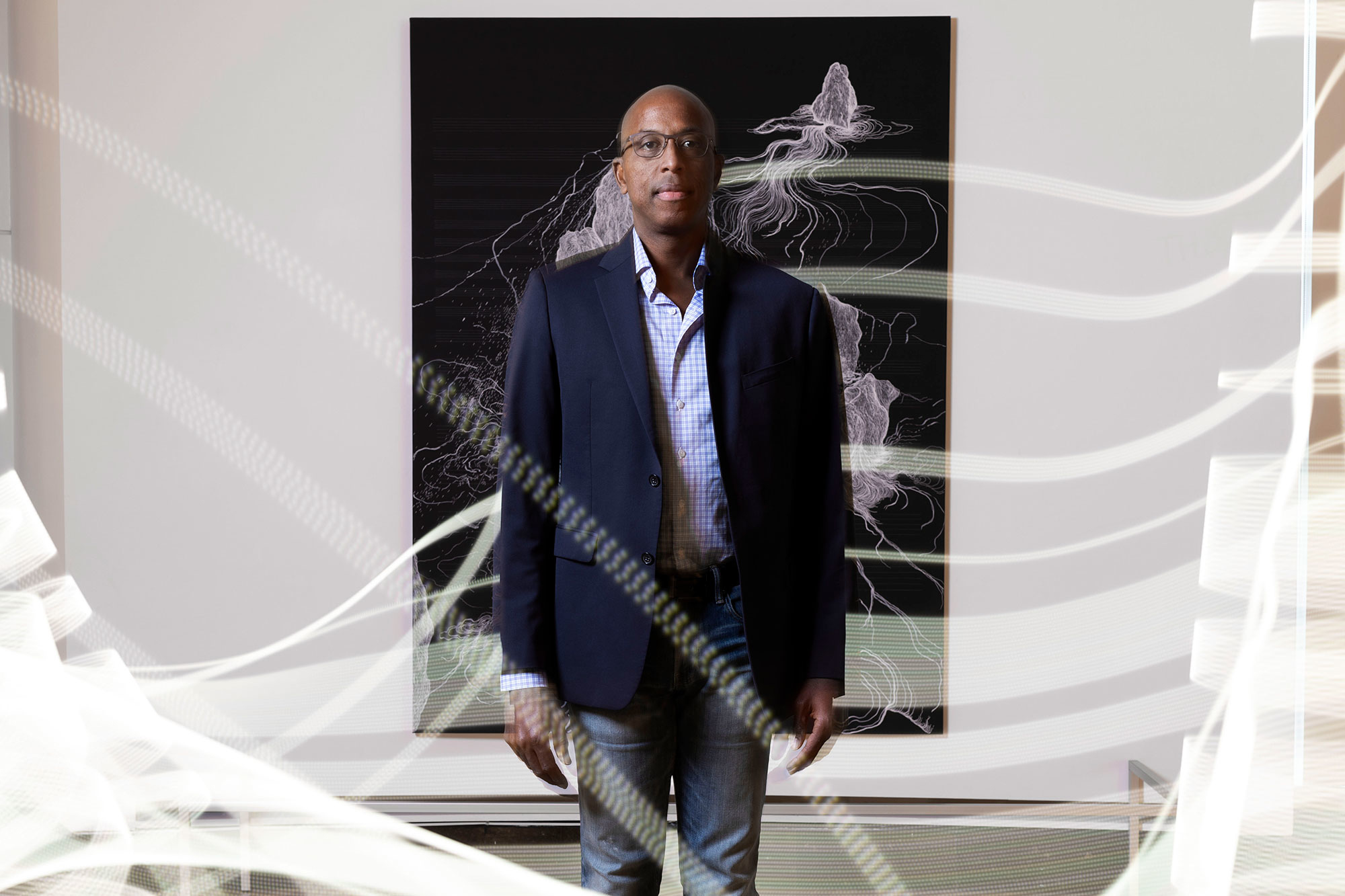
Portrait by Brianne Lehan and Lyon Duong/UF Photography. Artwork: "Untitled" by Sandra Cinto, 2015, courtesy of the artist and Tanya Bonakdar Gallery, New York
Associate professor of civil and coastal engineering, Herbert Wertheim College of Engineering
Having the knowledge about how to protect homes from wind damage doesn’t help if homeowners don’t act on it. Prevatt looks at ways to take engineering knowledge to the public to safeguard life and property.
Rethinking wind:
“I’m a windsurfer and a sailor. As a kid, I was fascinated by how the wind could be harnessed to provide power to move us forward. I’m from the Caribbean, and the winds there also can be so destructive. It made me start asking, why? We choose to build in a particular way at a particular place that makes what we love vulnerable. As a structural engineer, I can build differently. I can build to be resilient. I can build to be stronger. I can build houses to be resistant to these wind effects.”
Why are homes still vulnerable?
Building codes in Florida have improved after Hurricane Andrew caused more than $20 billion in damages in 1992, but almost 80 percent of Florida’s current structures were built before then, so are likely to be vulnerable to wind damage. Retrofits — reinforcing of existing structures to make them stronger — can help, but are rarely implemented, Prevatt says, in part because homeowners don’t realize how vulnerable their houses are to wind damage or the how difficult rebuilding might be. “When you’re taking two kids to dancing class and soccer practice and trying to make your way in the world, you come home in the evening and it’s the last thing you want to think about. No one has attempted to provide homeowners with tips on how to resolve the dilemma of retrofitting.” Prevatt is looking at solutions, from understanding how homeowners make decisions to a mobile app that could identify the most effective retrofits and guide them through the process.
Homes of the future:
“Imagine if you were driving a car that was still based on 1950s technology. Now imagine living in a 1950s house. You don’t have to imagine it, because that’s what you’re living in right now. There has been almost zero innovation to the basic structural framing in single-family homes since the 1950s. It doesn’t have to be this way.” Pre-fabricated walls could offer a more affordable and wind-resilient alternative to traditional construction, Prevatt says. “You could buy your walls in Home Depot just as you buy lumber. We know how to do that, and it can solve some of these problems. As sustainability and wind-resistance become bigger issues, maybe as a society we might start coming together and thinking about it.”
What change would you most like to see?
"I’d hope to help our population understand that hurricanes are natural hazards — they are the way the earth breathes and controls its systems and therefore we ought not to try to change or control hurricanes. However, disasters are something we create and therefore can control. We create the disasters caused by natural hazards one building at a time. We have chosen to build in particular ways that are vulnerable, although we know better. We continue to migrate to coastal areas susceptible to hurricanes and bring our old, inadequate house construction techniques with us, only to be surprised that they don’t work. Ultimately, it’s up to us — collectively we can change outcomes. We can choose other approaches, but we have to do so as a community, and we have to make a long-term commitment to sustainable construction. The houses we build today will affect the vulnerability of our community for the next 50 to 70 years. As civil engineers, it is our responsibility to ensure you can find the construction technology so you won’t have to live with the uncertainty that the next hurricane is going to blow your house away.”
Hear Prevatt explain what hurricane-force winds feel like in this NPR clip.
This is part of a series highlighting people at the University of Florida working to protect our well-being and the health of the planet, paired with works from the Harn Museum of Art exhibition “The World to Come: Art in the Age of the Anthropocene.” See more at ufl.to/theworldtocome.